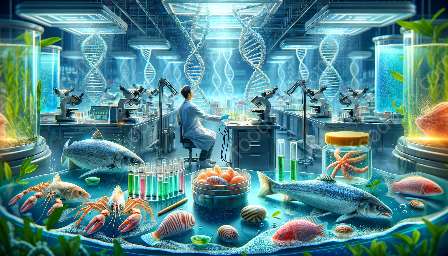Seafood is a popular and nutritious part of many diets, but for some individuals, it can trigger allergic reactions and sensitivities. Understanding the science behind seafood allergies is crucial for both consumers and the food and drink industry.
The Science Behind Seafood Allergies and Sensitivities
Seafood allergies and sensitivities are immune system responses to specific proteins found in fish and shellfish. These reactions can range from mild to severe and, in some cases, can be life-threatening. The most common seafood allergens include proteins in crustaceans (such as shrimp, crab, and lobster) and finned fish (such as salmon, tuna, and halibut).
When someone with a seafood allergy or sensitivity consumes seafood or is exposed to seafood proteins through inhalation or skin contact, their immune system mistakenly identifies the proteins as harmful and releases chemicals such as histamine to protect the body. This can lead to a range of symptoms, including hives, itching, swelling, abdominal pain, vomiting, diarrhea, and, in severe cases, anaphylaxis.
Implications for Food and Drink
Seafood allergies and sensitivities have significant implications for the food and drink industry. Restaurants, food manufacturers, and caterers must be aware of potential allergens in their products and create clear labeling to inform consumers about the presence of seafood ingredients. Cross-contamination and the use of shared cooking equipment also pose risks for individuals with seafood allergies, highlighting the importance of thorough cleaning and food safety protocols.
Furthermore, understanding the science behind seafood allergies allows the industry to develop innovative alternatives and substitutions to accommodate consumers with seafood sensitivities. By incorporating this knowledge into product development and menu planning, the food and drink sector can cater to a wider range of dietary needs and preferences.
Causes of Seafood Allergies
Although the exact causes of seafood allergies and sensitivities are not fully understood, several factors are believed to contribute to their development. Genetics play a role, as individuals with a family history of allergies are more likely to develop allergies themselves. Additionally, environmental factors, such as exposure to seafood at an early age or environmental allergens, may influence the onset of seafood allergies.
Managing Seafood Allergies
For individuals with seafood allergies, effectively managing their condition is essential. This involves strict avoidance of seafood and seafood-derived products, as well as being vigilant about cross-contamination in food preparation and cooking environments. Furthermore, carrying emergency medication, such as epinephrine auto-injectors, is crucial for individuals at risk of severe allergic reactions.
Conclusion
Seafood allergies and sensitivities present complex challenges for both individuals and the food and drink industry. By gaining a deeper understanding of the science behind these allergic reactions, informed decisions can be made to promote a safe and inclusive dining experience for all consumers. From identifying allergens to implementing effective management strategies, the knowledge surrounding seafood allergies and sensitivities plays a vital role in shaping the landscape of food and drink offerings.




















